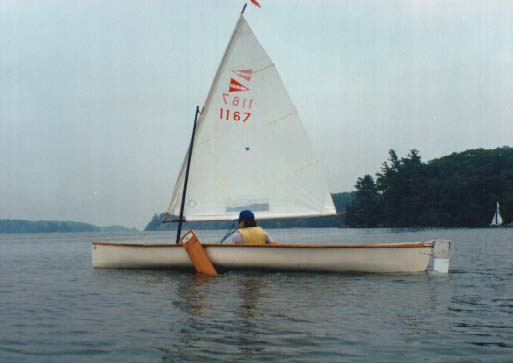
I grew up on the water near Long Island Sound, with paddling in my blood. My father was an accomplished paddler from the Inwood Canoe Club in New York City. He raced successfully on the Hudson River from New York to Albany three times—and I still have his canoe.
When he served as Commodore of the American Canoe Association from 1957 to 1958, our family spent summers at Sugar Island. Back then, canoe and kayak races, along with canoe sailing, filled the days. About 150 people would attend, mostly families camping together. I vividly remember the ten different paddling races—some featuring Canadians, others with ACA paddlers from across the country: Ohio, Maryland, New York, and beyond. After Sugar Island, many would continue on to Clayton, NY, for more racing.
During one of those summers, my friend told Ohio paddler Dave Merwin—a top competitor—that I was a great paddler. On that recommendation alone, he invited me to join him in a double-bladed kayak race. I’d never been in one of those tippy racing kayaks, and I certainly wasn’t a racer. We could’ve flipped, but somehow stayed upright. I never forgot that experience.
Years later, from 1976 to 1986, I joined Sebago Canoe Club in Brooklyn, NY, and became an instructor in both canoeing and sailing. I especially loved the weekend trips—to the Pine Barrens in New Jersey, upstate New York, Maine, and the Delaware River. In the fall, we hiked together in Harriman State Park near Lake Sebago. We had so much fun.
One dream I always held was to try whitewater paddling. The moment finally came—but with a hard decision. I had to choose between attending my father’s memorial at Sugar Island or going on my first whitewater trip. Although I was very close to my father, I chose the Potomac River. I’ll never forget paddling the drop by Harpers Ferry. That experience lit a spark in me—I was hooked.
Later on, I met my husband, Chuck Sutherland, a sea kayaker, at a Kayak and Canoe Club of New York pool event where I was learning kayak self-rescue. With a group of his friends, we took an unforgettable trip to Quebec, Canada. First, we paddled out to Bonaventure Island, where ocean birds nested along the cliffs. Then we headed to the Saguenay River—a glacier-carved fjord. Everyone was searching for beluga whales.
We camped in a marshy cove, home to some very persistent black flies. The next morning, someone spotted a spout a mile downstream. We jumped into our kayaks—air bags forgotten—and paddled out. The belugas came to us! For half an hour, they swam calmly nearby with their calves. They didn’t seem to mind our presence at all. I’ve always been glad I paddle a white-bottom sea kayak—it must look less threatening.
Looking back, I think my grade school teachers wondered why I had such strong arms. I credit canoeing. Like many of my generation, I started with sprints, moved to recreational canoeing, then became a whitewater paddler—and now I’m an avid canoe sailor.
If you ever get the chance, I urge you to visit ACA’s Sugar Island. Whether you’re into kayaking, canoeing, sailing, or just meeting paddlers from all walks of life, it’s a special place worth experiencing.
We’re deeply grateful to Marilyn Vogel for sharing her lifelong connection to paddlesports and the American Canoe Association to the ACA Story Project.
About the Author
A lifelong paddler and proud ACA Lifetime Member, Marilyn’s connection to the organization began in childhood—paddling alongside her father, a former ACA Commodore, and attending races at Sugar Island. Today, she continues that legacy as a longtime member of the Sugar Island Board of Trustees, where she helps steward the island’s paddling traditions and hosts annual canoe sailing events that bring the community together. From her earliest days on the Hudson River to sea kayaking with beluga whales, Marilyn’s story reflects a lifetime of adventure, connection, and dedication to the ACA mission.

